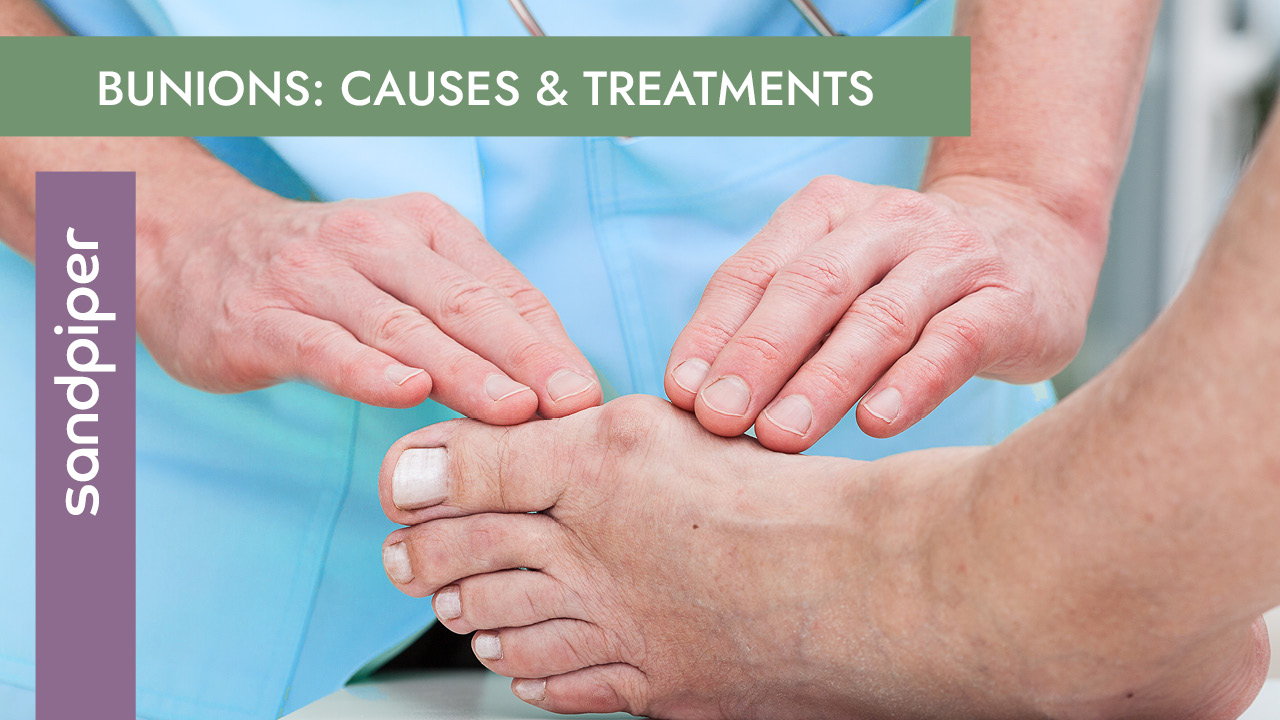We use cookies to make your experience better. To comply with the new e-Privacy directive, we need to ask for your consent to set the cookies. Learn more.
Bunions: Causes and Treatment

Bunions
A bunion is a bony deformity of the joint at the base of the big toe. The medical name is hallux valgus. The main sign of a bunion is the big toe pointing towards the other toes on the same foot, which may force the foot bone attached to it (the first metatarsal) to stick outwards.
Other symptoms may include:
These symptoms can sometimes get worse if the bunion is left untreated, so it’s best to see a GP. They’ll ask you about your symptoms and examine your foot. In some cases, an X-ray may be recommended to assess the severity of your bunion. Anyone can develop a bunion, but they’re more common in women than men. This may be because of the style of footwear that women wear.
What causes bunions?
The exact cause of bunions is unknown, but they tend to run in families. Wearing badly fitting shoes is thought to make bunions worse. It’s also thought that bunions are more likely to occur in people with unusually flexible joints, which is why bunions sometimes occur in children. In some cases, certain health conditions, such as rheumatoid arthritisand gout, may also be responsible.
Treating bunions
There are a number of treatment options for bunions. Non-surgical treatments are usually tried first, including painkillers, orthotics (insoles) and bunion pads. However, these can only help to reduce
the symptoms of bunions, such as pain. They don’t improve the appearance of your foot. Surgery may be considered if your symptoms are severe and don’t respond to non-surgical treatments. The type of surgery will depend on the level of deformity, the severity of your symptoms, your age, and any other associated medical conditions.
Complications
If bunions aren’t treated, they can lead to further problems. For example, they can cause arthritis in your big toe and push your second toe out of place. Problems can also develop after bunion surgery.
While surgery is usually effective (symptoms are improved in 85% of cases), bunions can sometimes return. In less than 10% of cases, complications occur after bunion surgery. These will depend on the type of surgery you have and can include:
• stiffness in your toe joints
• a delay or failure of the bone to heal, or the bone healing in the wrong position
• pain under the ball of your foot
• damage to the nerves in your foot
• prolonged swelling and continued pain
• the need for further surgery
Preventing bunions
The best way to reduce your chances of developing bunions is to wear shoes that fit properly. Shoes that are too tight or have high heels can force your toes together. It’s best to avoid wearing shoes with high heels or pointy toes. Bunions are rare in populations that don’t wear shoes.
Sandpiper Top Tip: Make sure your shoes are the correct size and that there’s enough room to move your toes freely.
More next week...
Next week time we will be discussing Rheumatoid Arthritis.
If this guide has inspired you to be kind to your feet and "discover real comfort" please take a look at the full range of comfort and wide fitting shoes on our website: www.sandpipershoes.com
FIND US ON FACEBOOK: www.facebook.com/LoveSandpiper
FIND US ON YOUTUBE: www.youtube.com/@sandpipershoes
